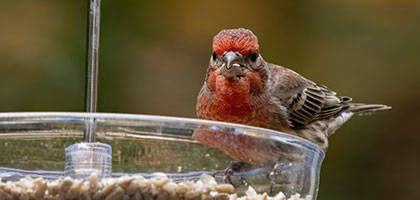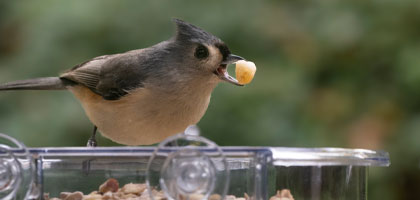Bird feeding is a popular hobby. It brings joy and a sense of connection with nature.
One of the best ways to attract birds is by using nyjer seed. This seed is a favorite among many bird species.
In this article, we'll explore the top birds that love nyjer seed. We'll also delve into why these birds are attracted to this particular seed.
Whether you're a seasoned bird watcher or a beginner, this guide will provide valuable insights. It will help you attract a variety of beautiful birds to your garden or backyard.
What Is Nyjer Seed?
Nyjer seed, also known as thistle seed, is small and black. This tiny seed is rich in oil and nutrients.
Originally from Africa and Asia, nyjer seed is sterilized before sale. This prevents it from sprouting as an invasive plant.
Bird enthusiasts favor nyjer seed for feeding small songbirds. Its size and composition make it ideal for tube and sock feeders.
Why Birds Love Nyjer Seed
Many birds find nyjer seed irresistible due to its high oil content. This makes it a rich energy source. Especially during colder months, this nutrient-dense seed provides essential nourishment.
Aside from its nutritional benefits, birds are attracted by its size. Tiny seeds fit perfectly in small beaks.
Here are the main reasons birds are drawn to nyjer seed:
- Rich in essential oils
- Nutrient-packed energy source
- Ideal size for small beaks
This unique combination ensures a consistent flow of avian visitors to nyjer seed feeders, especially finches.
Top Birds Attracted to Nyjer Seed Feeders
American Goldfinch
The American Goldfinch, with its bright yellow plumage, is a frequent visitor to nyjer seed feeders. Their attraction to the seeds is undeniable, making them a regular sight in gardens. Providing nyjer seed is a great way to attract these colorful birds.
Lesser Goldfinch
Lesser Goldfinches, smaller yet just as vibrant, also love nyjer seed. These birds add lively energy to any feeder area with their lively presence. Offering nyjer seed is key to enticing these cheerful finches to visit regularly.
Pine Siskin
Pine Siskins, identifiable by their streaked brown feathers, flock to nyjer seed, especially in winter months. The seed's high fat content provides much-needed energy. Their appetite for nyjer seed makes them enthusiastic visitors to feeders.
Purple Finch
Purple Finches, with their distinctive raspberry hues, are drawn to nyjer seed’s energy-rich composition. These birds often bring vivid color to feeders. Providing nyjer seed is a surefire method to invite these beauties into view.
House Finch
Although less vibrantly colored, House Finches are consistent consumers of nyjer seed. Their cheerful chirping is a welcome addition to any garden space. A nyjer seed feeder effectively attracts these common but charming songbirds.
Common Redpoll
Common Redpolls, known for their tiny size and red caps, relish nyjer seed offerings. These birds are often seen during colder months, taking advantage of the seed’s nutrients. Nyjer seed feeders help support these hardy birds in winter.
Indigo Bunting
Though less common, Indigo Buntings may visit nyjer seed feeders in suitable regions. Their striking blue coloration makes them a noteworthy addition to any feeder site. Even occasional sightings are rewarding for bird enthusiasts.
Tips for Using Nyjer Seed Feeders
Using nyjer seed feeders effectively can attract a variety of birds. Placing feeders in quiet, sheltered areas is essential. This positioning provides birds with a peaceful feeding environment.
Maintenance of feeders is crucial to ensure bird health. Regular cleaning helps prevent mold and disease. Always keep feeders free from debris.
Consider these tips for optimal feeding:
- Use mesh sock, tube, or tray feeders.
- Mix nyjer seed with other fine seeds.
- Store nyjer seeds in a cool, dry place.
Conclusion
Nyjer seed is a small but significant component of bird feeding that appeals to various beautiful species. By understanding which birds love nyjer seed, you can create a vibrant bird sanctuary in your own backyard.






